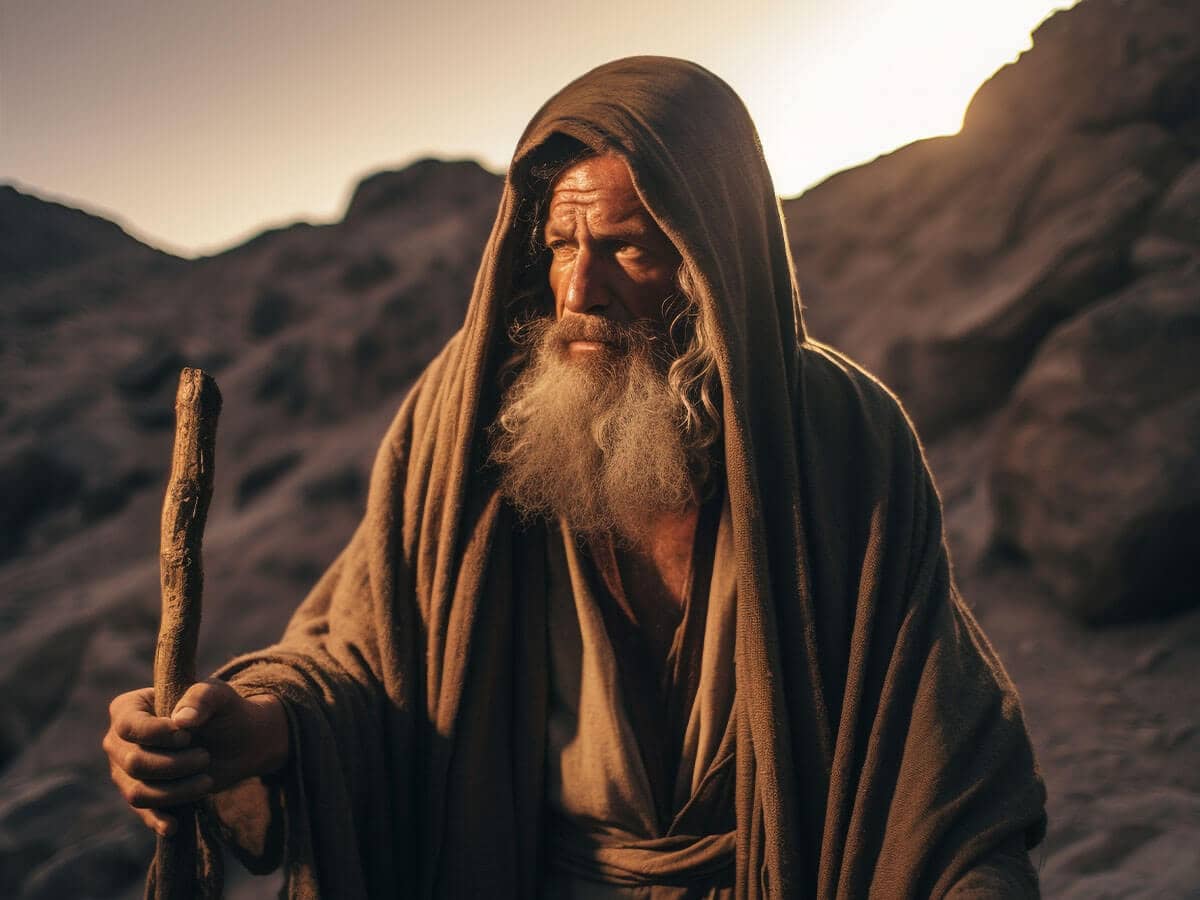
The Old Testament and the New Testament are more than two parts of the same book; they share a symbiotic connection. One represents the past; the other, the future. One creates the law; the other offers grace. One is the production; the other is the curtain raiser.
Essentially, the Old Testament is about the creating and the New Testament is fulfilling. Following the prophetic words of Isaiah, it took Jesus 600 years to bring them to pass, but that stresses the connection between the two books.
Many Christians learned that after Malachi confronting the Jewish people’s lukewarm commitment to God (Malachi 3:7-12), there is no writing for 400 years until we read Matthew, the first of synoptic Gospels. We learned about the Garden of Eden, the plights and persistence of the chosen people, the voyage across a sea and a journey across a desert. From David to Daniel and Hagar to Hannah, Isaiah to Elijah and Rahab to Ruth, the Old Testament is a collection of stories that changed the course of history.
And then nothing?!
There’s no way that much history would stop being made without more to follow. We know something was happening, but no one wrote about them. Sure, it was 400 “years of silence,” but that doesn’t mean no one was talking. And that’s the secret bridge between the two parts. There isn’t a massive chasm between two large pieces of land. There is a connection. It’s like that scene in “Indiana Jones and the Last Crusade.”
“The path of God…It’s impossible…it’s a leap of faith,” says Indy.
“You must believe, boy. You must believe,” gasps his father.
He takes one massive step forward, and then we understand. The path to the other side was always there. Indiana Jones just didn’t see it. It’s faith that connects the two books despite nothing being read, written, or told. Something is coming. Something better. Something brighter. And that something was Jesus.
The New Testament Concealed
When we turn to the beginning of the Old Testament, we are greeted with the dawn of a new day, the creation of a new life.
In the beginning God created the heaven and the earth. And the earth was without form, and void; and darkness was upon the face of the deep. And the Spirit of God moved upon the face of the waters. And God said, Let there be light: and there was light. Genesis 1:1-3 KJV
Regardless of the miracle, God created. Throughout the 39 books of the Old Testament, the Children of Israel are learning about their identity as He was creating their destiny. Throughout the Old Testament, the identity of Israel is formed and refined as God shapes them for their divine purpose–to usher in the coming of the Lord Jesus.
In Genesis 12:2-3, God establishes Israel’s identity through His covenant with Abraham, promising to make him the father of a great nation, his name will be great, and he would be a blessing. This promise not only defines Israel’s future but also begins to distinguish them as a people set apart for God's purposes. This also creates the first looming shadow of Christ in the Old Testament as Jesus personified a great nation and becoming a great blessing.
Much as we all require in life, the Children of Israel not only needed direction (through Abraham), but also deliverance (through Moses). In Exodus 19:5-6, we see God cementing their identity as His chosen people by giving them the Law at Mount Sinai. When Moses returns with those sacred tablets of stone, their identity is tied directly to their relationship with God, and their destiny is to serve as a light to the nations.
Each person has their individual journey, a personal understanding of who Jesus is to them. Yet, this was a collective journey that molded Israel’s identity as God leads them through the wilderness and into the Promised Land. The period of wandering in the wilderness was not merely a journey from one place to another, but a time of spiritual formation and preparation for their future where the Israelites needed to place their eyes above.
Deuteronomy 18:15 is prophetic note citing the coming of a prophet whom God will raise up among the Israelites. Like Moses, He will speak God’s words and guide His people.
“The Lord your God will raise up for you a Prophet like me from your midst, from your brethren. Him you shall hear, according to all you desired of the Lord your God in Horeb in the day of the assembly, saying, ‘Let me not hear again the voice of the Lord my God, nor let me see this great fire anymore, lest I die.’”
Following the journey to the Promised Land and the Books of Joshua, Judges, 1 and 2 Samuel, and 1 and 2 Kings, we encounter the collection prophetic writings in the Old Testament that continue this theme. God sends messengers over four centuries to remind Israel of both their unique identity and the destiny that will lead to the reality of Jesus.
In Isaiah 49:6, we see God reminds Israel of their greatest purpose.
Indeed He says, ‘It is too small a thing that You should be My Servant to raise up the tribes of Jacob, and to restore the preserved ones of Israel; I will also give You as a light to the Gentiles, that You should be My salvation to the ends of the earth.’
This statement reveals that Israel’s identity as God’s chosen people was always intended to have a global impact that spans generations. Their destiny was not only to be restored as a nation but also to be a reckoning through which God’s salvation would be extended to all nations. Throughout the Old Testament, Israel’s identity is intertwined with their destiny, as God prepares them to fulfill their role in His redemptive plan for the world.
Once we reach the end of the Old Testament, we take that leap of faith together as we are led into 27 new books and learn the hidden message of all those journeys, stories, and prophecies. That’s when we see God was always up to something.
The Old Testament Revealed
In the Synoptic Gospels, Jesus Christ is introduced from four different perspectives that illustrated the stories of the Children of Israel and underscored the need for a Savior. Although these are various tales about the same person, Matthew, Mark, Luke, and John were led by the Holy Spirit to discuss the tales of Jesus’ ministry to a different audience in the way they would receive it most effectively.
- Matthew: Written to the Jews with a perspective of “Christ as King.”
- Mark: Written to the Romans with a perspective of “Christ as Servant.”
- Luke: Written to the Greeks with a perspective of “Christ as Man.”
- John: Written to the World with a perspective of “Christ as God.”
The four synoptic Gospels were written over a span of nearly 50 years in three different countries and over 320 different Old Testament prophecies were recorded by Jesus.
“Synoptic” comes from a Greek word meaning “taking a general or comprehensive view,” which happens, but in the most profound way because there was nothing “general” about what Jesus did.
Regardless of awe-inspiring differences among each Gospel, and the specific purposes each one ended up serving, there is one similarity between them all. It’s recorded in Matthew 1:23-25 KJV.
Now all this was done, that it might be fulfilled which was spoken of the Lord by the prophet, saying, ‘Behold, a virgin shall be with child, and shall bring forth a son, and they shall call his name Emmanuel, which being interpreted is, God with us.’ Then Joseph being raised from sleep did as the angel of the Lord had bidden him, and took unto him his wife: And knew her not till she had brought forth her firstborn son: and he called his name Jesus.
It was revealed that Jesus fulfilled Old Testament prophecies and long-held beliefs about the coming Messiah. Although those beliefs were considered heresy by many orthodox Jewish priests, they knew the stories. And when they saw Jesus fulfill some of them (e.g., A prophet like Moses in Deuteronomy 18, Suffering Servant in Isaiah 53, Riding on a donkey in Zechariah 9, He would be called God’s Son in Psalm 2), they couldn’t argue or debate the result.
The secret to understanding the New Testament is the “Gospel Message” at the time of Jesus was the Old Testament. That was the “Good News” God’s Spirit shared with the Children of Israel. All the stories, the miracles, and the prophecies were embodied by the man they knew as Jesus. When He died as an atonement for our sin, he fulfilled them all and revealed the truth of the Gospel.
“The New Testament lies concealed in the Old, the Old lies revealed in the New.” - Augustine, Questions on the Heptateuch 2.73
This is one of the most well-known comparisons of the two parts of the Bible. And God was the master architect of them both, which became a love letter to us all.

